Science Illustrated delivers natural science, break through discoveries and an understanding of the world for the entire family. Packed with stunning photography and in-depth editorial it’s a visually spectacular gateway to the world looking into the beginning of life to distant objects in the universe.
Science Illustrated
MEGAPIXEL SPACE CAPSULE
Science Update
BY THE WAY
Satellite to produce artificial shooting stars • A Japanese satellite has just entered orbit around Earth which is designed to create artificial shooting stars that last longer and are more colourful than natural meteor displays.
Bone robot shows the first steps on dry land • Our earliest ancestors adapted more quickly to life on dry land than scientists used to think, according to a robot that scientists have built from old bones and new tiny motors.
Ask Us
Are endorphins also released in animals?
… you can break a glass with your voice? • In cartoons and comedies, the voices of female opera singers are sometimes so high-pitched that they make wine glasses shatter. Is that really possible?
IN YOUR FACE!
Your face lies about your age • You have a baby face. When compared with our closest relatives, we look like young children.
Are faces burned into our memories? • Your neighbour can recognise your face among thousands of others. Natural selection has made the human face easy to recognise – and the brain an expert in storing faces in memory.
Mutations cause a flat forehead or a big nose • Scientists are finally cracking the code concerning facial shape. Based on a small DNA sample, they can now predict whether the DNA’s owner will have a large nose tip or a pointed chin.
Your muscles mirror facial expressions • If your face is paralysed, you might find it difficult to decode the faces of other people. Several experiments indicate that our face muscles play an important role in the interpretation of other people’s facial expressions.
A sad face ensures sympathy • A group of scientists is challenging Darwin’s old theories concerning the face. They think that the primary purpose of our facial expressions is to manipulate other people.
Cross the Atlantic at a speed of 6,000 km/h • The first non-stop, transatlantic flight was completed 100 years ago, in June 1919. Today the trip is a matter of routine, but change is in the air, with future planes able to fly at five times the speed of sound, or to orbit Earth 10 times consuming only a single litre of water…
Double hull causes less air drag • With shorter wings, engines located at the back, and a body that contributes to lift, the new Aurora D8 aircraft design will consume 66% less fuel than existing airliners.
The flying wing takes flight • The X-48 experimental plane is built according to the 'flying wing' design. The non-traditional shape allows the plane extreme lift and a low weight. But don't book a window seat.
Quiet boom allows a supersonic comeback • If an ordinary plane breaks the sound barrier, an intense shock wave is produced, which can crush windows on the ground. So NASA has begun to test the experimental X-59 QueSST fighter, which can convert the boom into a weak rumble.
Nanotubes resist extreme friction • Boron nitride atoms are linked by a strong chemical binding that allows the material its high melting point.
Airspace of the future is packed • Air traffic is expected to increase sevenfold by 2050, but with new satellite monitoring, air traffic controllers can use the global airspace more efficiently.
Future plane powered by ionic wind
Hybrid plane travels around the world via space • With a combined jet and rocket engine, the Skylon plane can push itself forwards both in the atmosphere and in space. As the speeds...
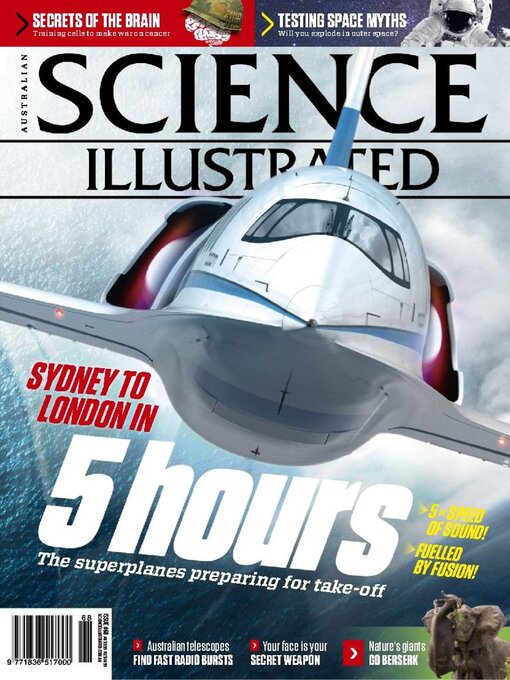
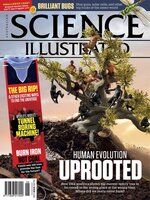 Issue 106
Issue 106
 Issue 105
Issue 105
 Issue 104
Issue 104
 Issue 103
Issue 103
 Issue 102
Issue 102
 Issue 101
Issue 101
 Issue 100
Issue 100
 Issue 99
Issue 99
 Issue 98
Issue 98
 Issue 97
Issue 97
 Issue 96
Issue 96
 Issue 95
Issue 95
 Issue 94
Issue 94
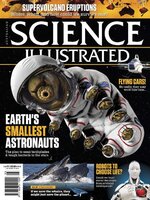 Issue 93
Issue 93
 Issue 92
Issue 92
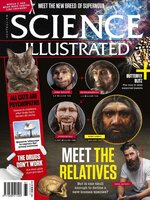 Issue 91
Issue 91
 Issue 90
Issue 90
 Issue 89
Issue 89
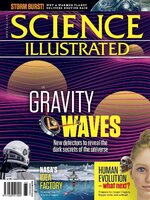 Issue 88
Issue 88
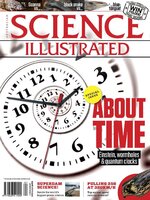 Issue 87
Issue 87
 Issue 86
Issue 86
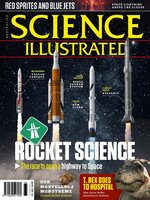 Issue 85
Issue 85
 Issue 84
Issue 84
 Issue 83
Issue 83
